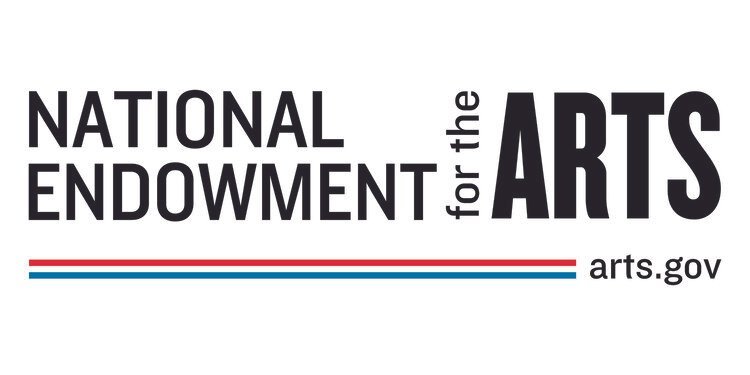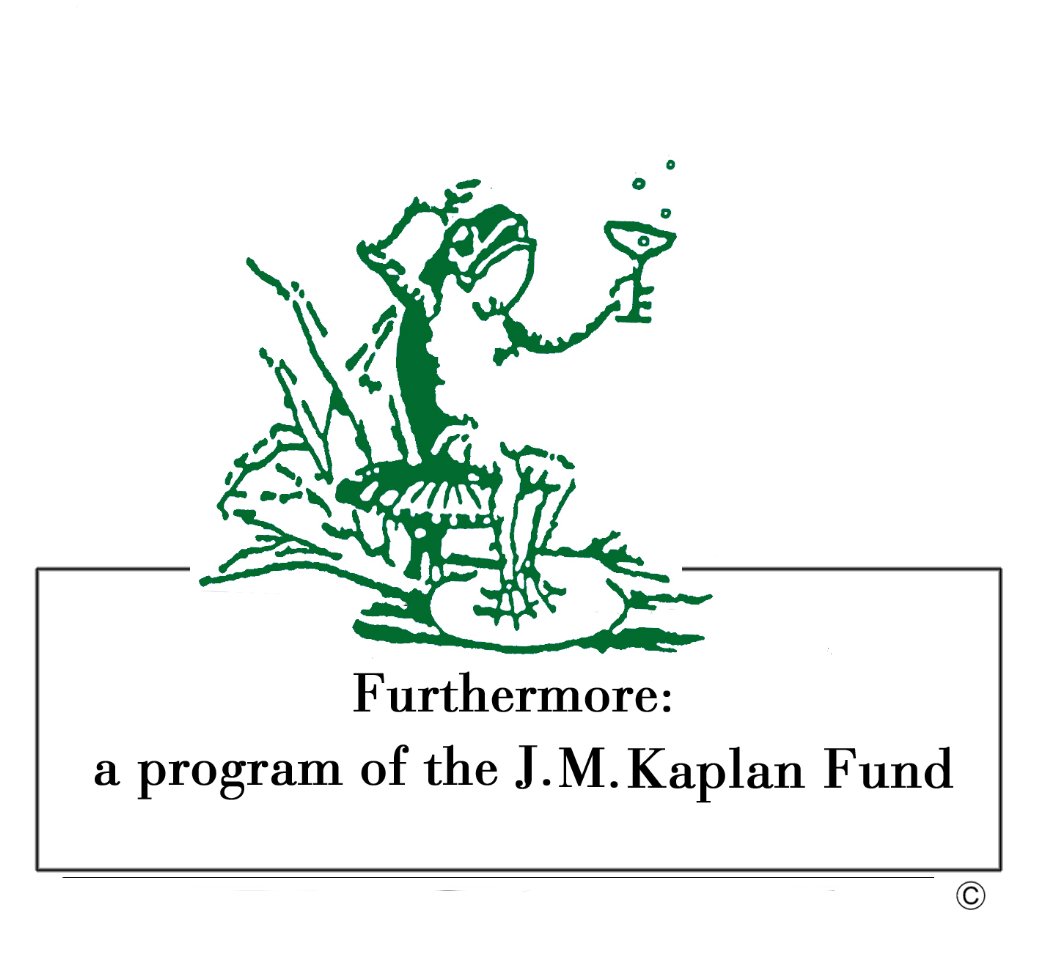may 24 through September 15, 2024
Tradition is ever-changing.
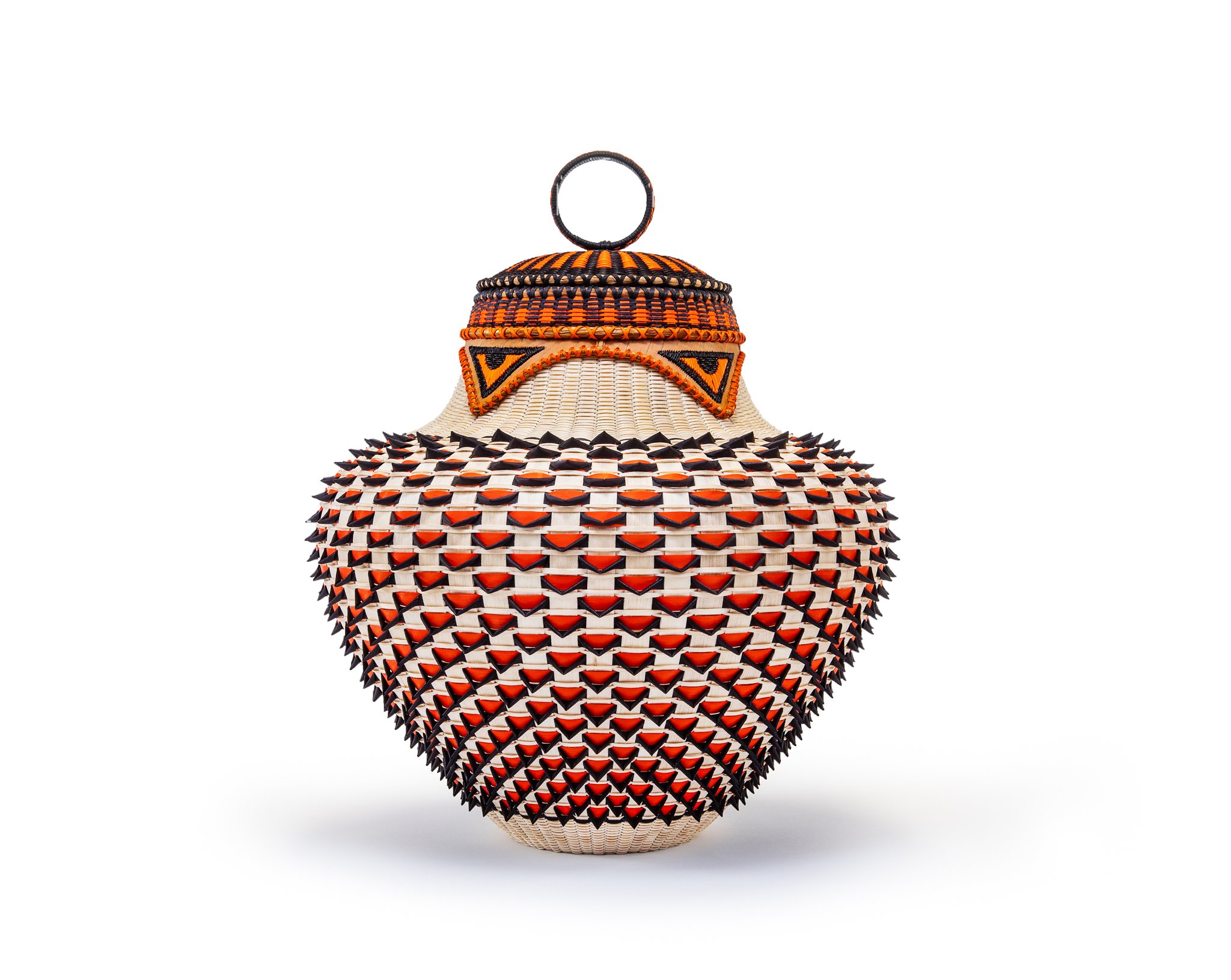
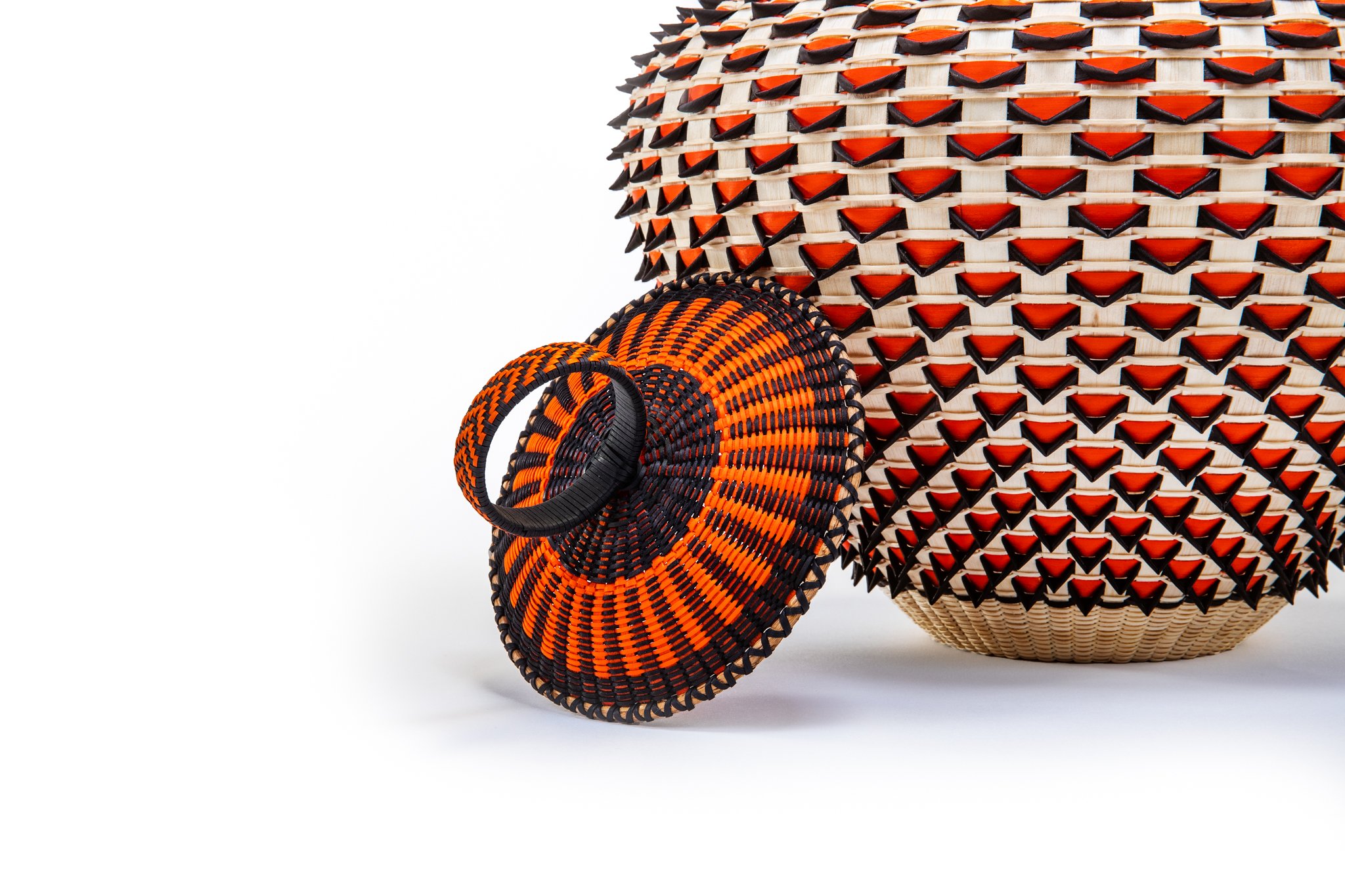
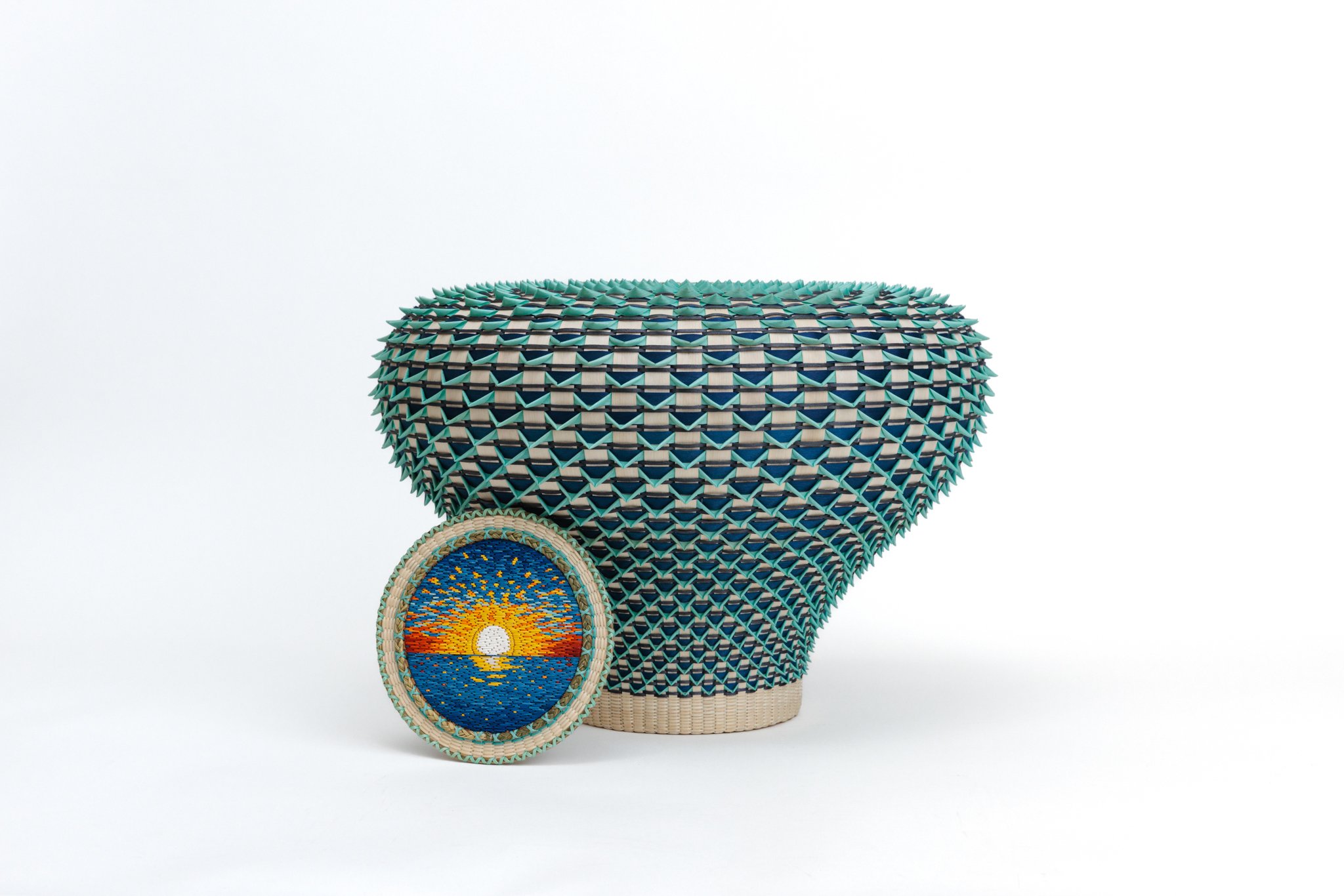
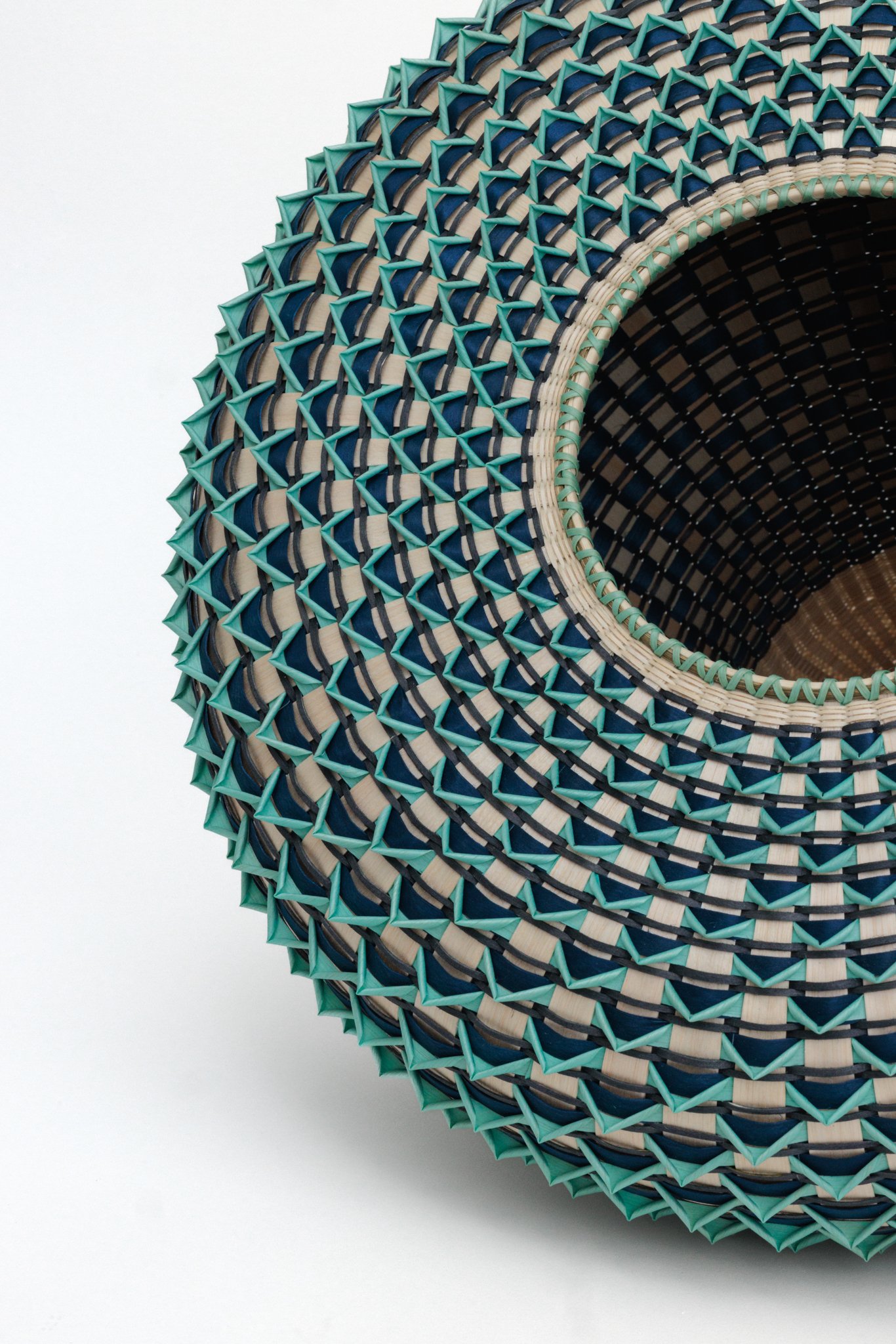

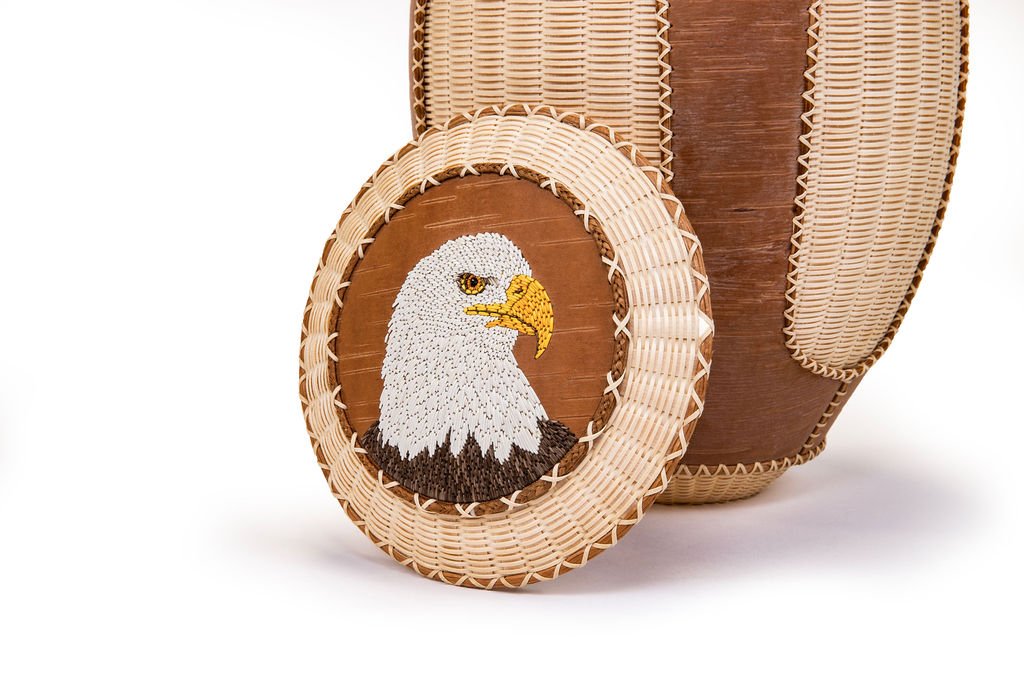
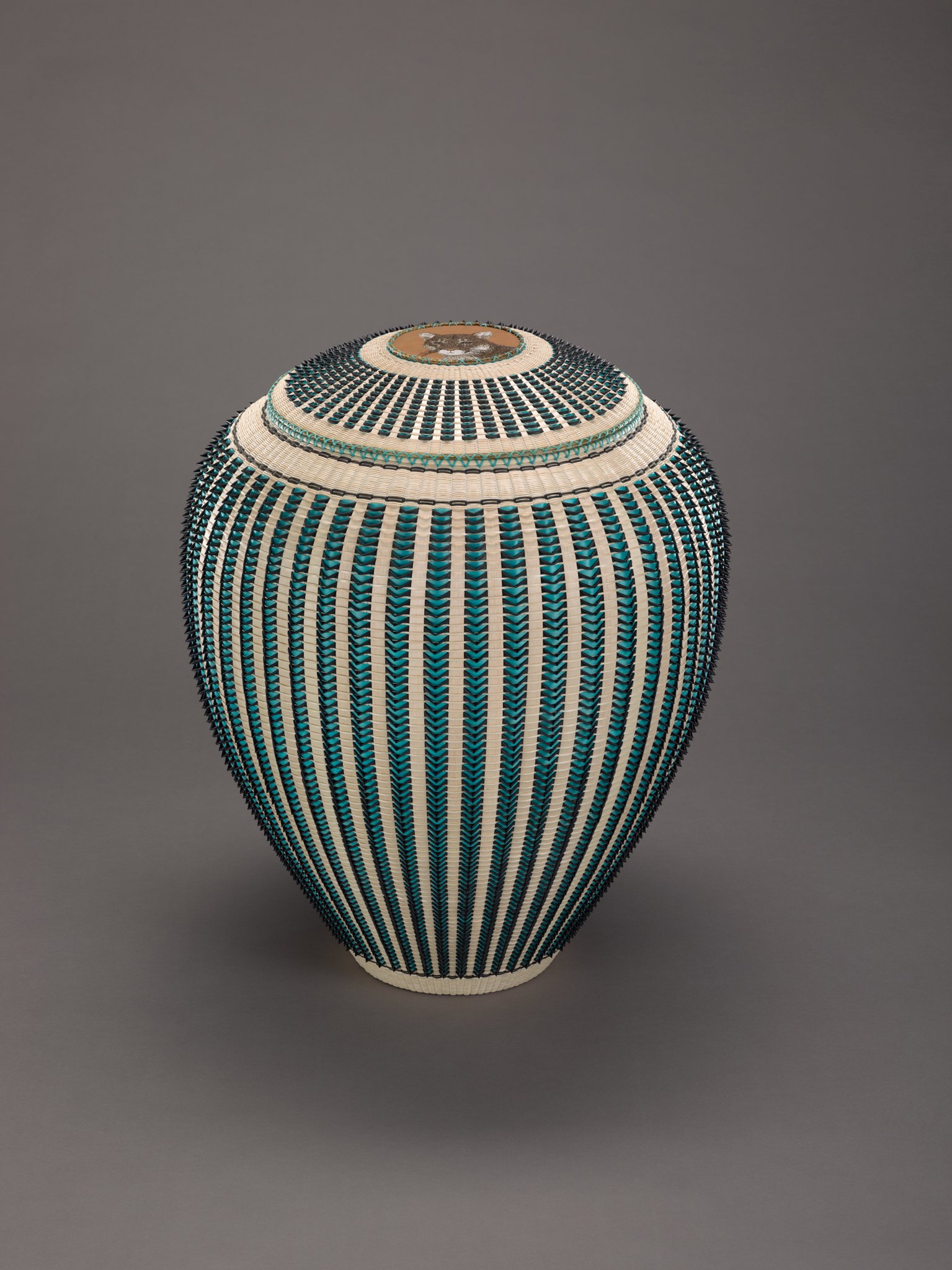
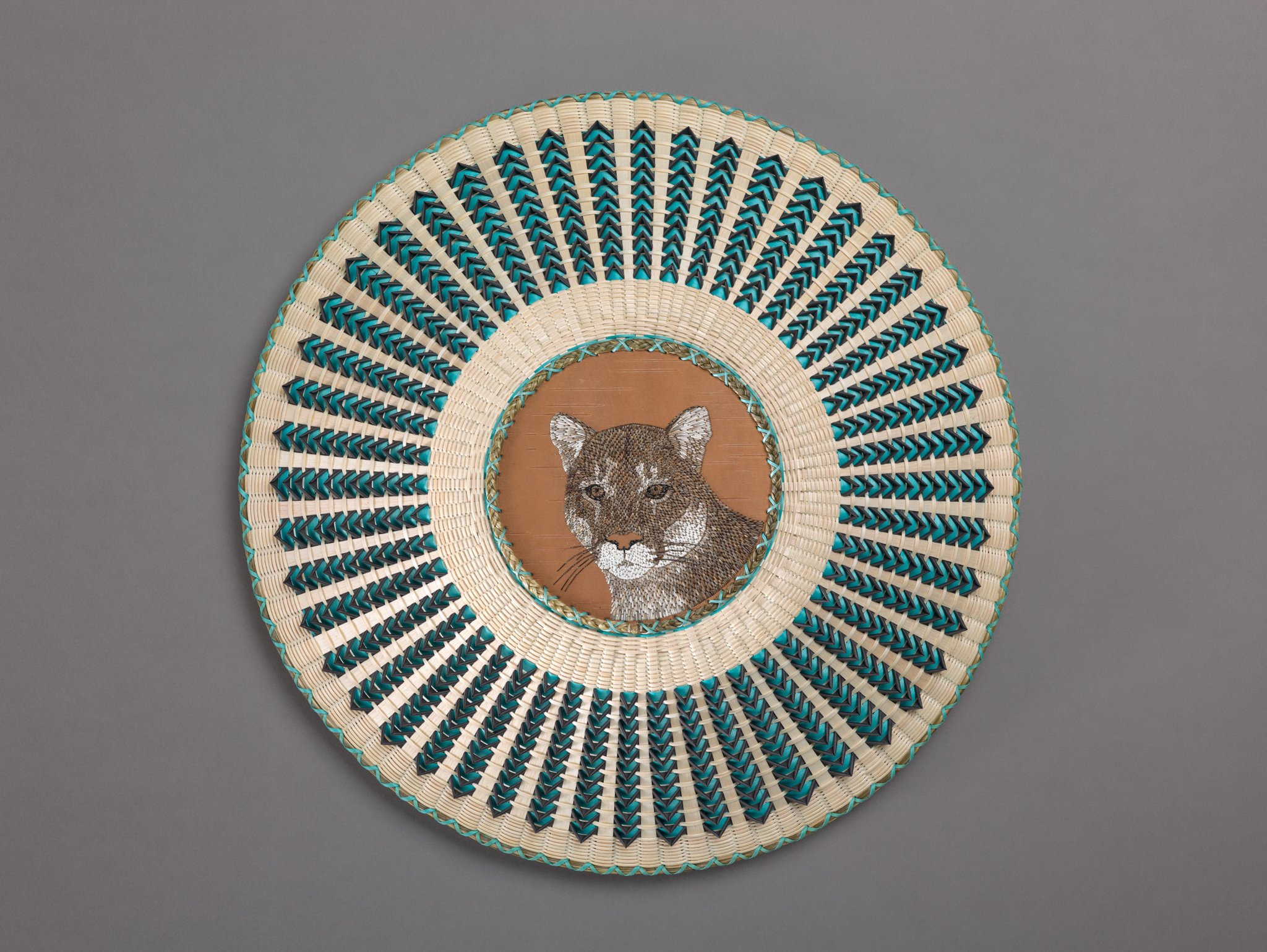
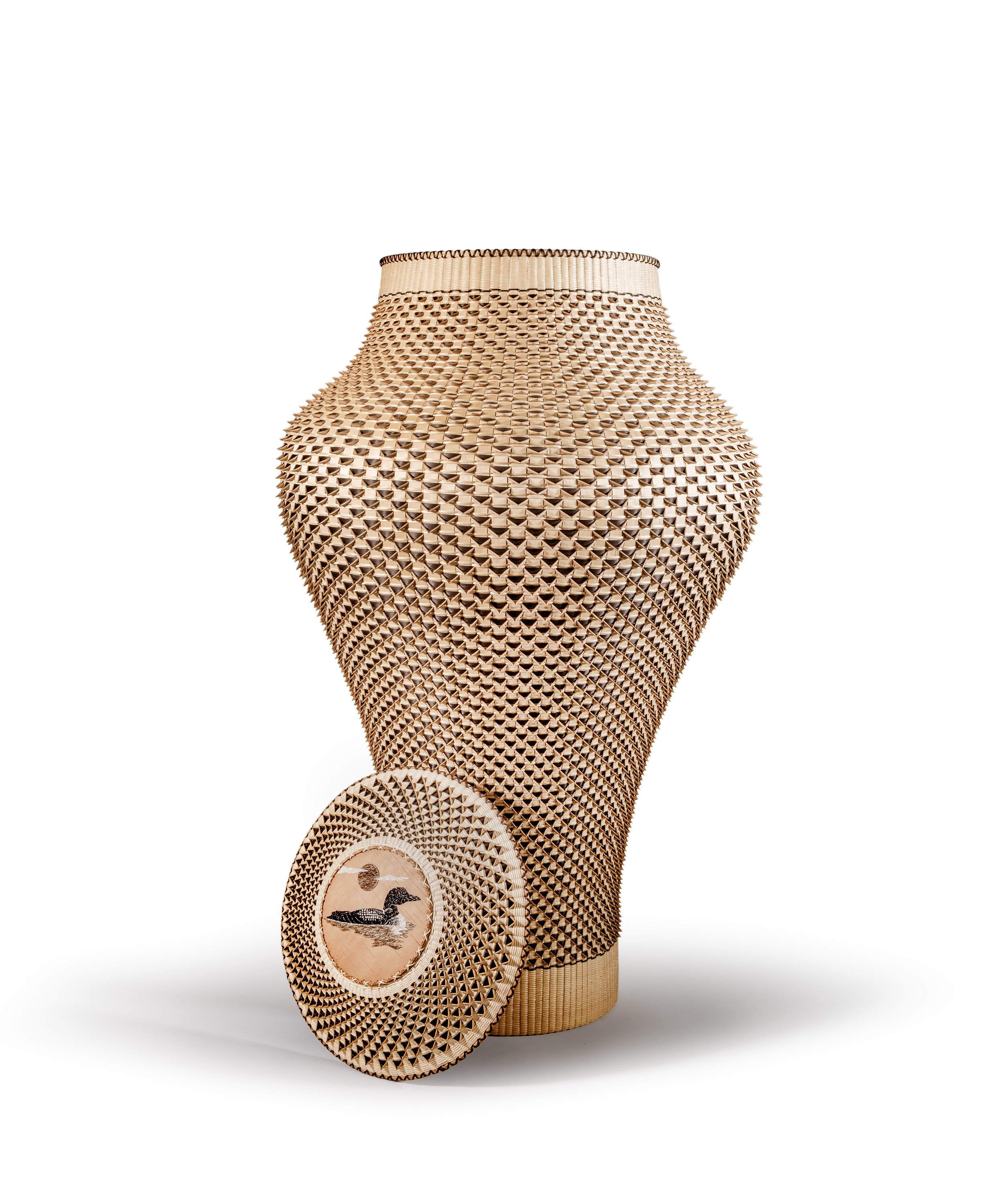
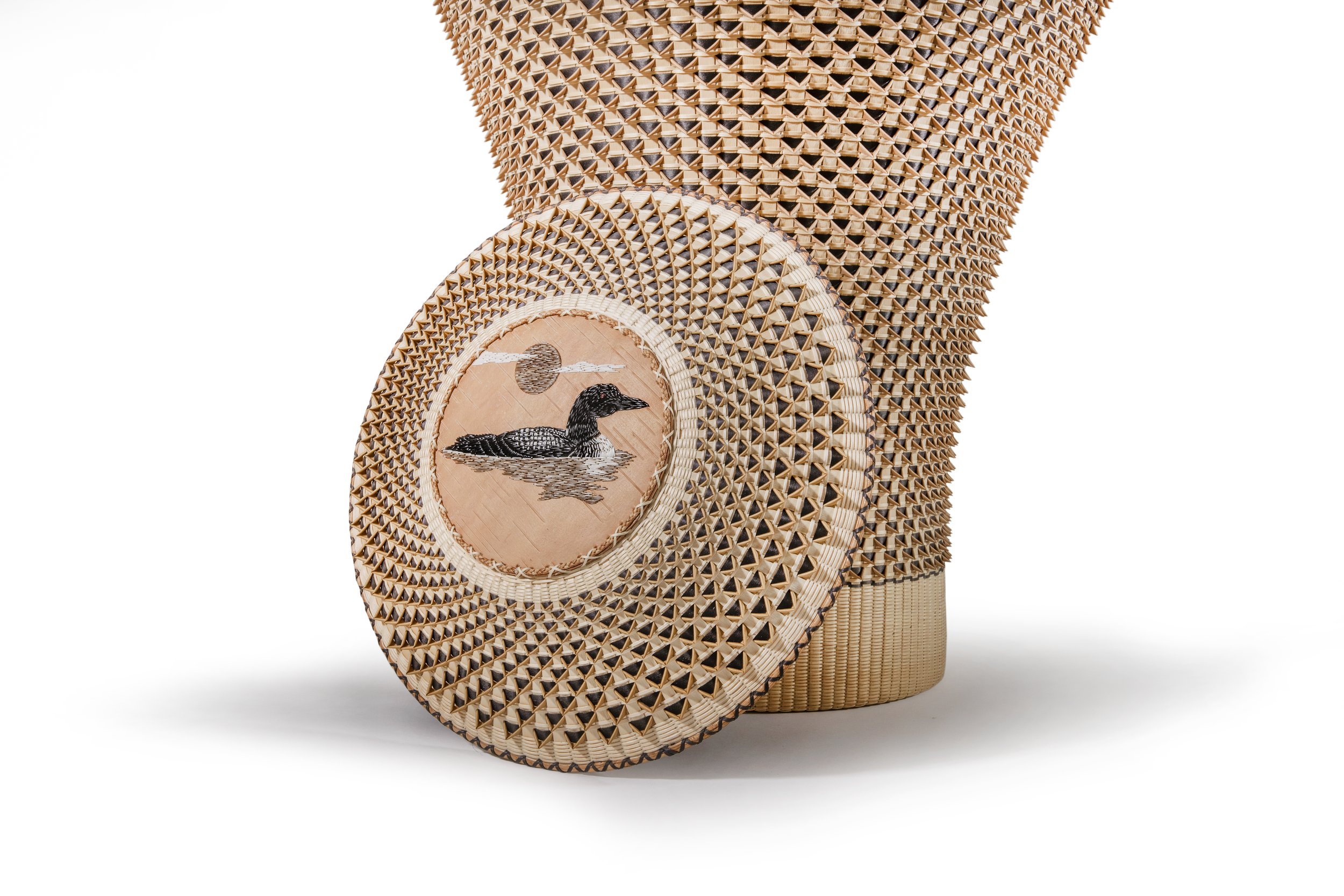
As the first-ever major retrospective of a Wabanaki artist in a fine art museum in the United States, Jeremy Frey: Woven is a groundbreaking exhibition in contemporary and Indigenous art. Featuring more than 50 baskets, made from natural materials like black ash and sweetgrass, Woven presents a comprehensive collection that spans a career of more than two decades. These works are intricate, mesmerizing, and expressive, emphasizing Frey’s prodigious skill and prolific creative output that honors and transforms one of the oldest art forms in the northeast.
Frey, a seventh-generation Passamaquoddy basket maker and one of the most celebrated Indigenous weavers in the country, learned traditional Wabanaki weaving techniques from his mother and apprenticeships through the Maine Indian Basketmakers Alliance. An important aspect of Frey’s artistic vision is his drive to build upon the past and what was once passed down to him. “I have refined the teaching of my mother beyond anything I would have considered possible,” Frey states. He pushes the boundaries of his work across concept, materials, and technique, adding “I try to create a newer and more elaborate version of my work each time I weave.”
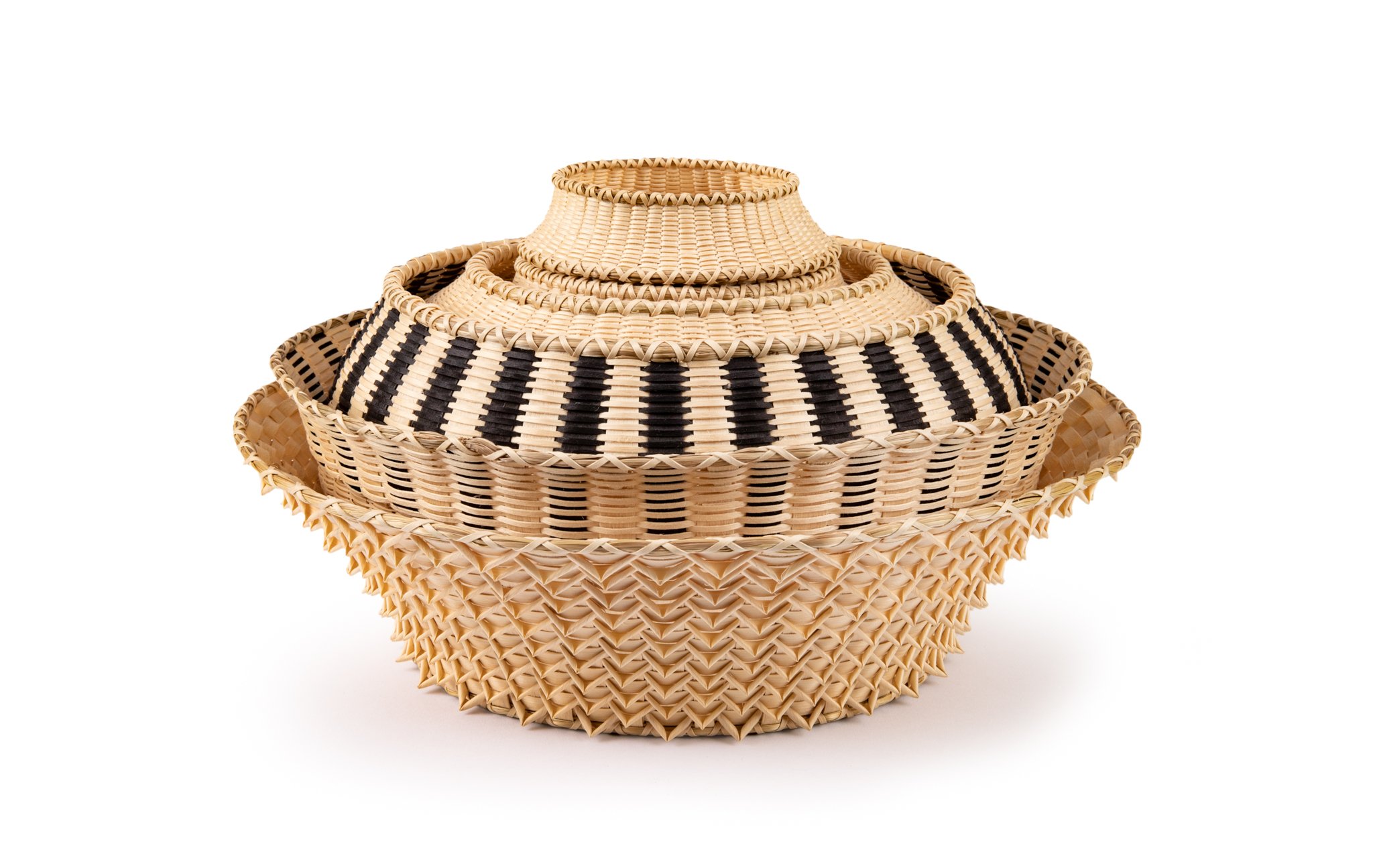
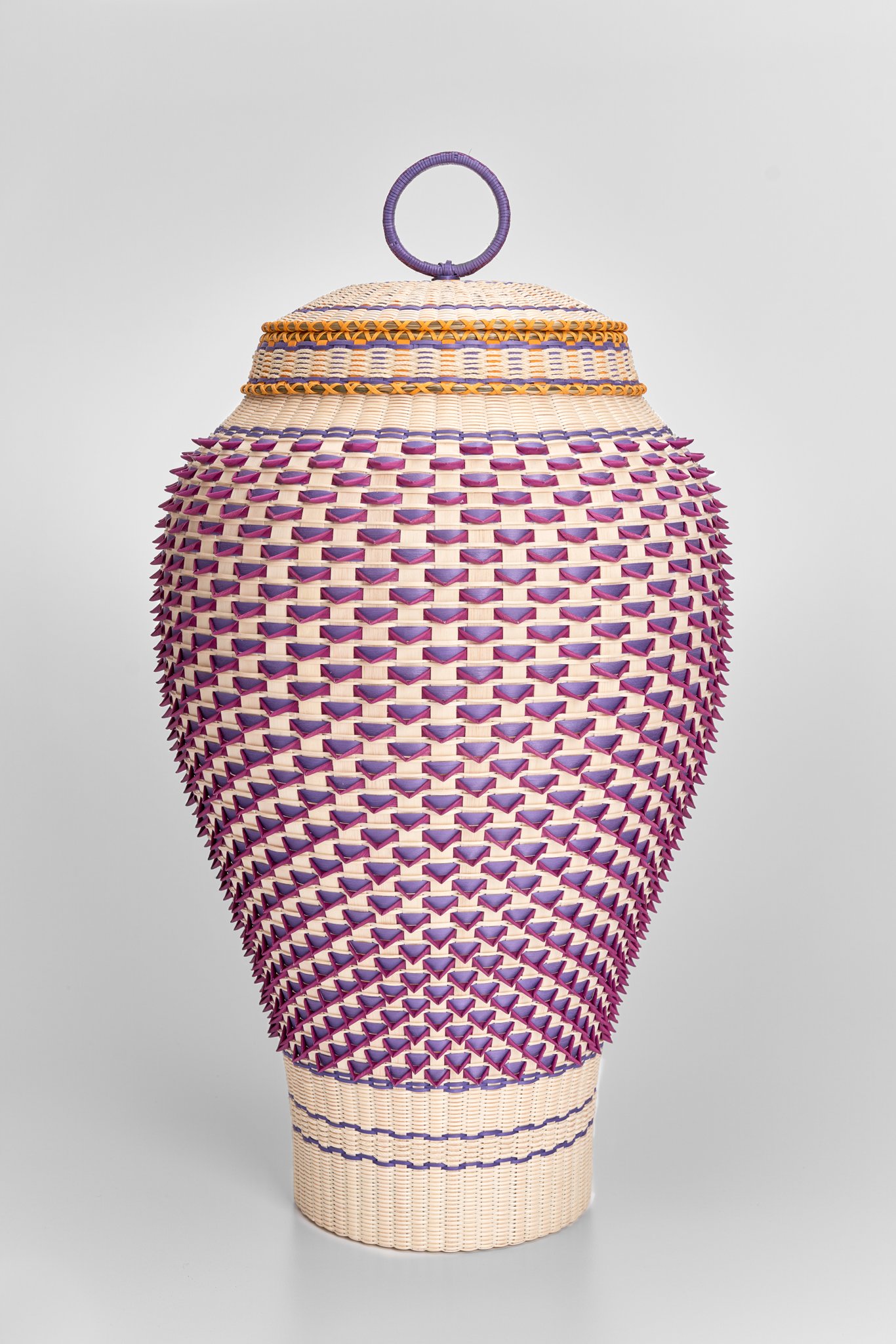
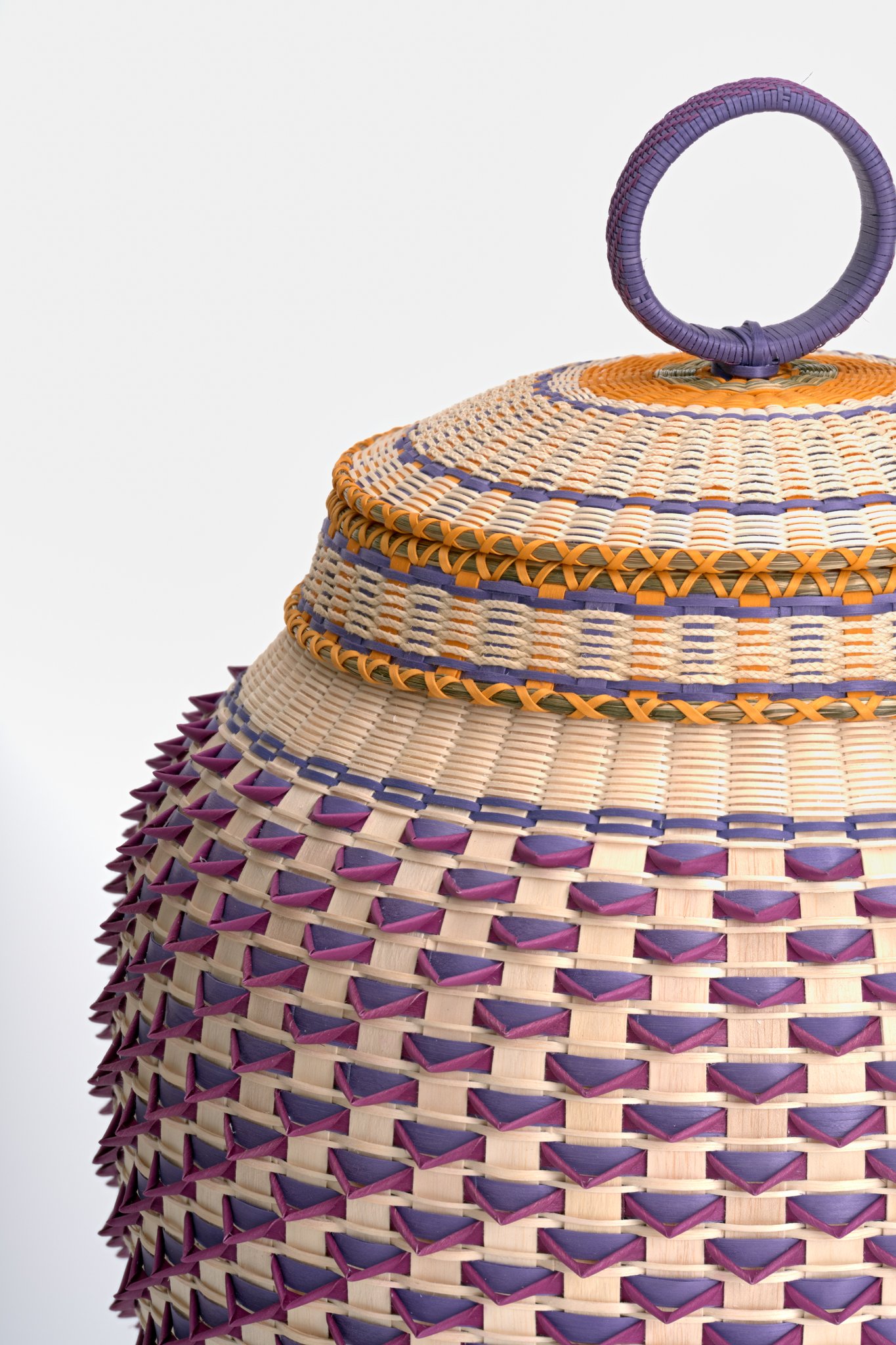
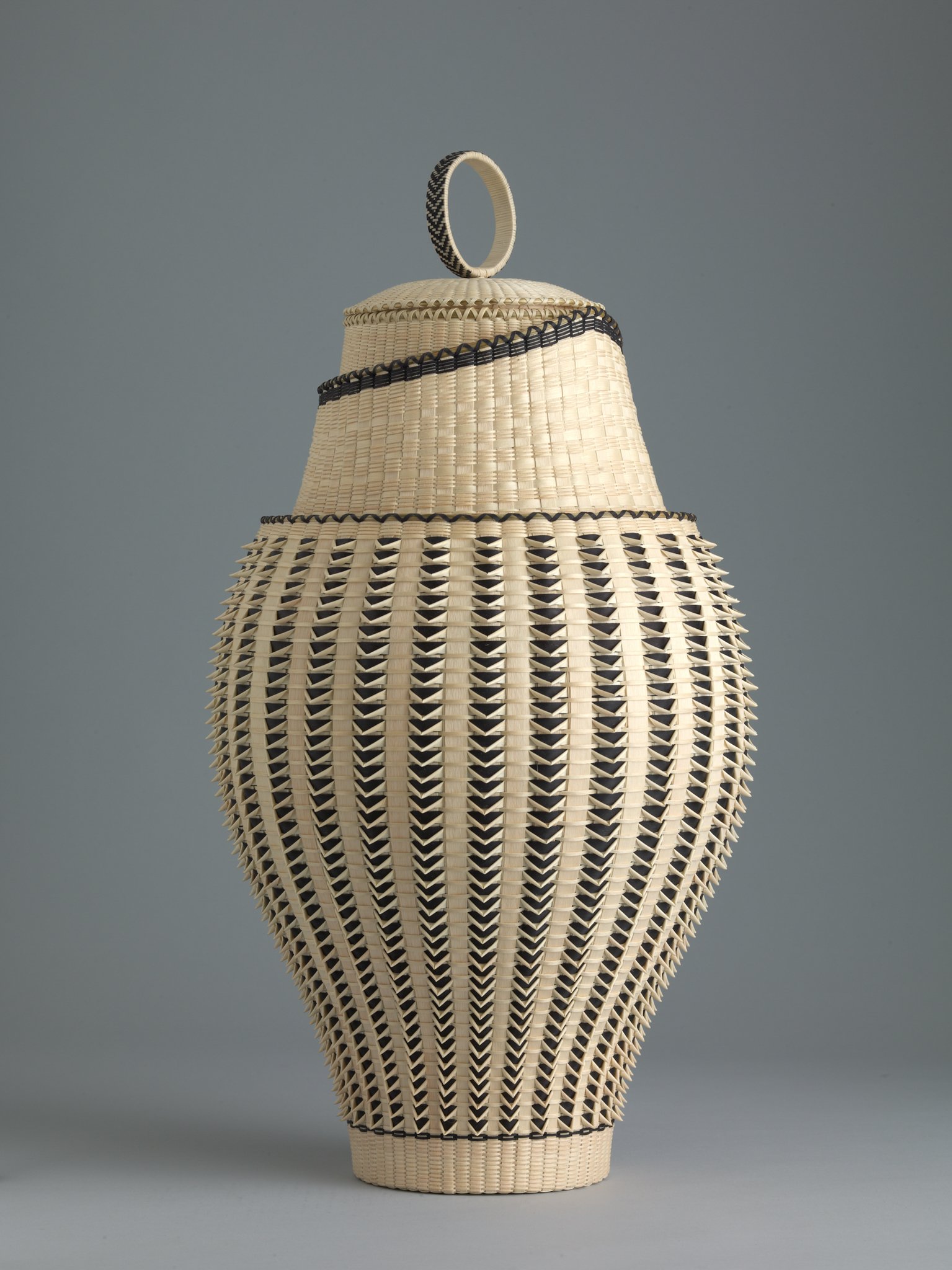
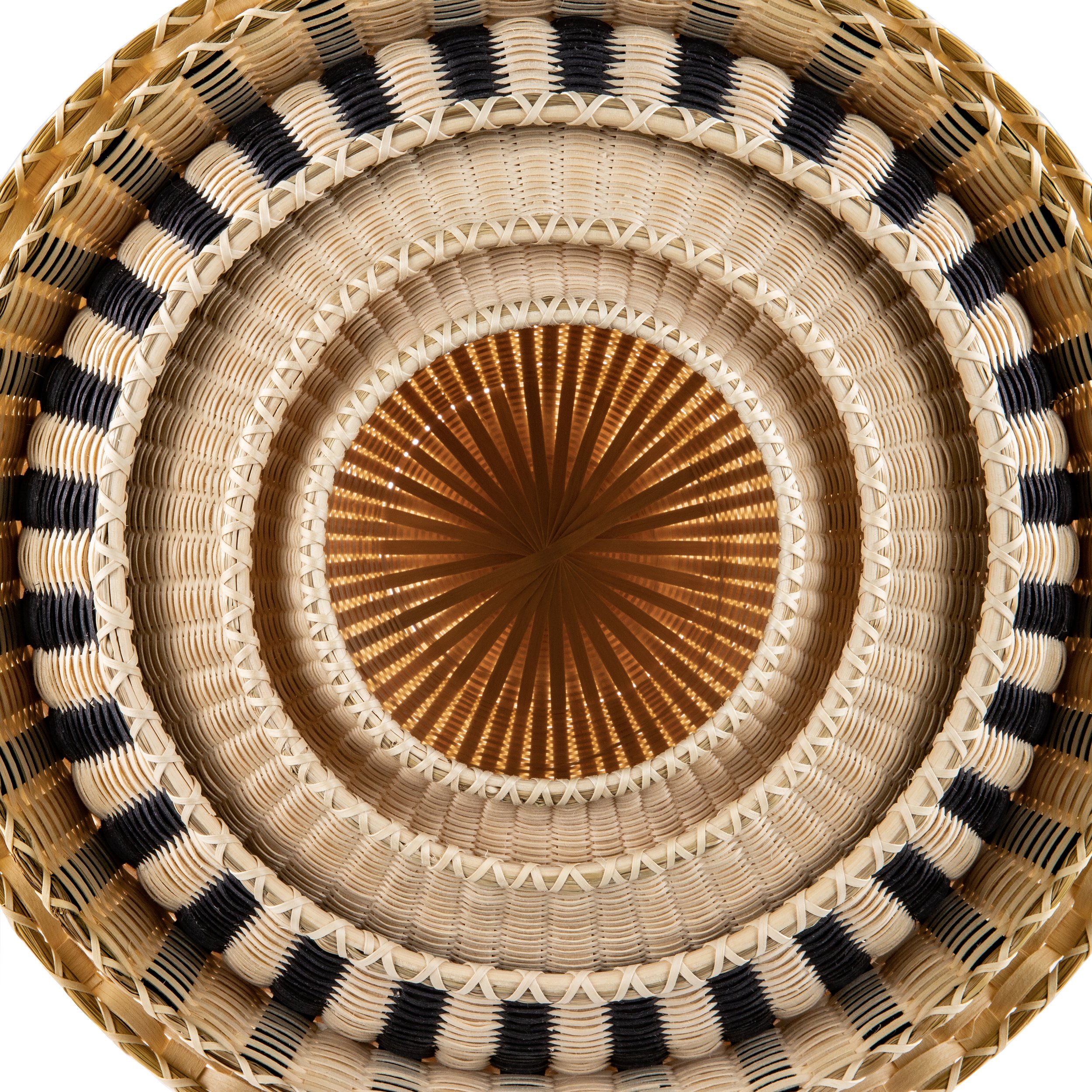
Basketry represents a core mode of cultural expression for Passamaquoddy people, whose tribal nation is one of five that form the Wabanaki Confederacy, along with the Penobscot, Mi’kmaq, Maliseet, and Abenaki. Their ancestral territory, called Wabanakik or “Dawnland,” stretches across present-day Canadian maritimes and the northeast United States, including where the Portland Museum of Art sits.
Organized by the Portland Museum of Art and co-curated by Ramey Mize, PhD, Associate Curator of American Art at the Portland Museum of Art, and Jaime DeSimone, Chief Curator at the Farnsworth Art Museum, the exhibition is supported by a catalogue of the same name, Jeremy Frey: Woven, published by Rizzoli Electa in association with the Portland Museum of Art. It includes essays from Mize; DeSimone; Dakota Hoska (Oglala Lakȟóta), associate curator of Native arts at the Denver Art Museum; Andrew James Hamilton, associate curator of Arts of the Americas at the Art Institute of Chicago; and Theresa Secord, a Penobscot basket maker and founding director of the Maine Indian Basketmakers Alliance. Secord also served as a cultural consultant for the exhibition and co-editor of the catalogue.
The only book on award-winning artist, Jeremy Frey.
As the first museum survey of Frey’s career, Woven also provides entry points for audiences to reflect on the mounting ecological challenges, cultural agency, and resilience embedded in Frey’s work. In recent decades, the emerald ash borer, an invasive species of beetle, has decimated ash stands from the Great Lakes to Maine. With the future of ash under such serious threat, Frey’s practice takes on new stakes, aiming to celebrate an endangered art form and preserving its legacy for future generations.
Beyond ash, Woven highlights Frey’s resourceful gathering of natural materials and their cultural significance in his designs. The confluence of materials, process, and time are inherent and powerful in Frey’s work. “Audiences are often astonished to discover that it can take many months for the artist to complete one work,” notes Mize. “Frey gathers every material that he uses in his practice—black ash, sweetgrass, cedar, spruce root, birch bark, and porcupine quills. With them, he creates works of exquisite complexity that reflect not only his immense technical skill, but also his profound ecological knowledge and relationship with the environment of the north woods.”
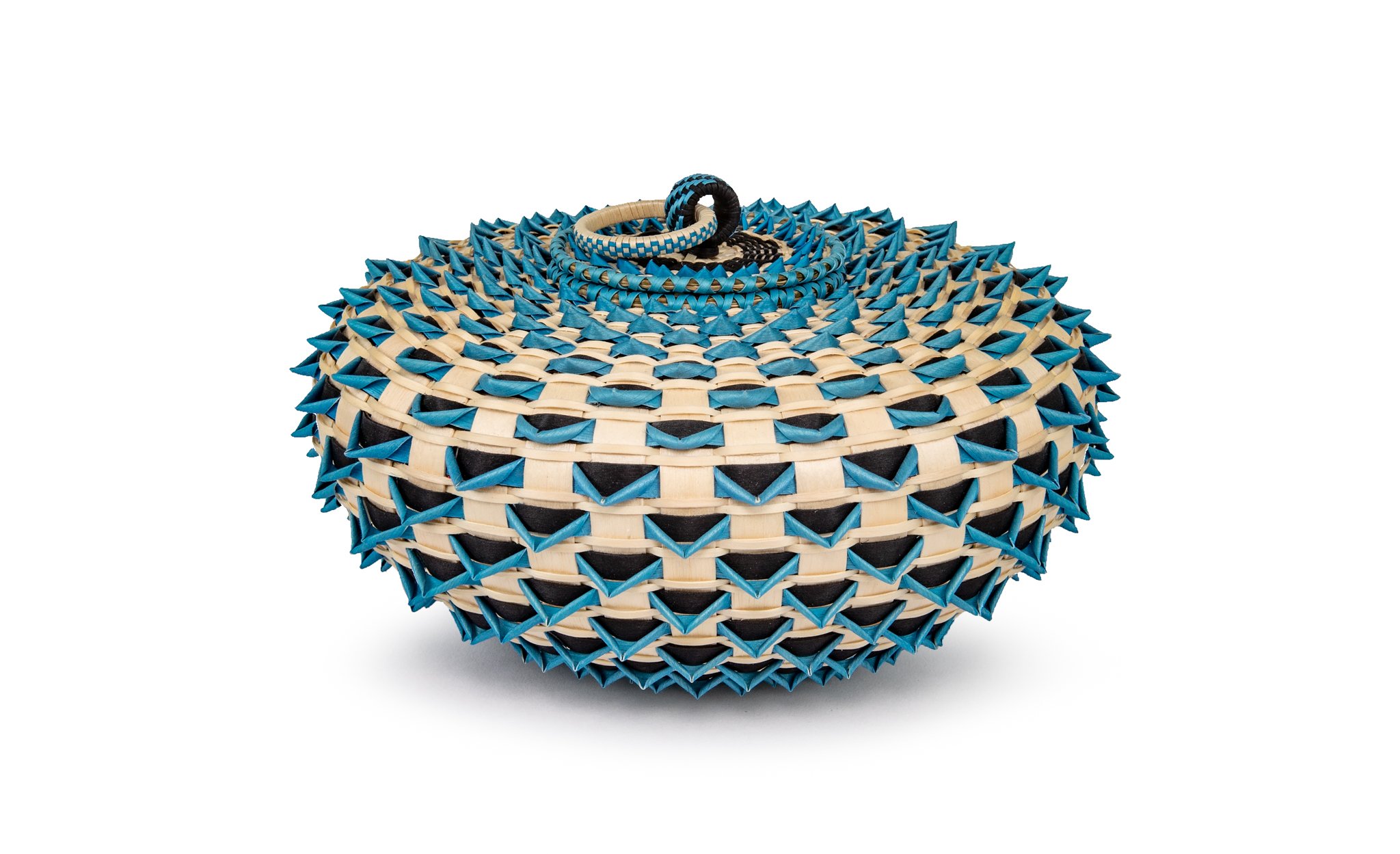
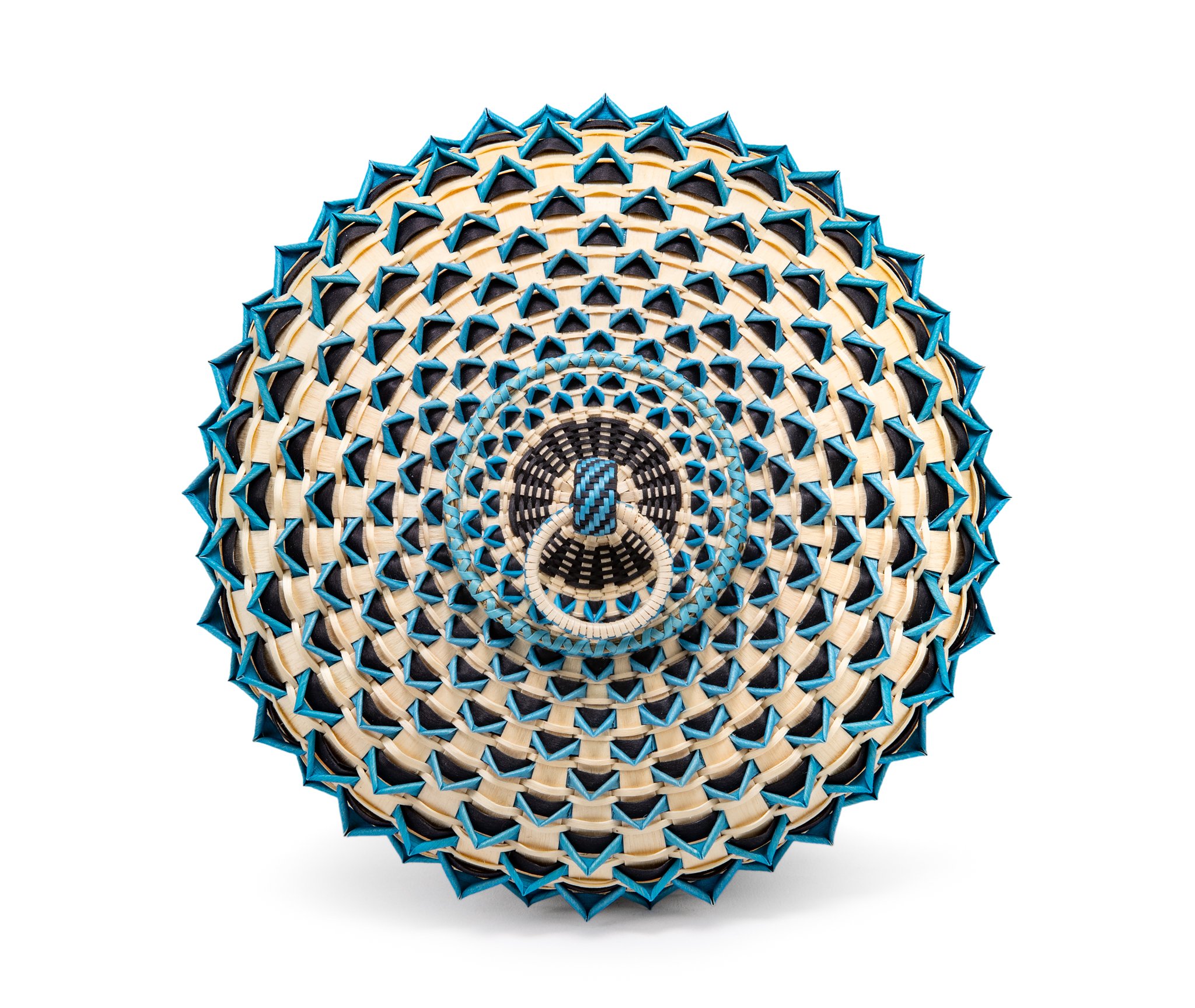
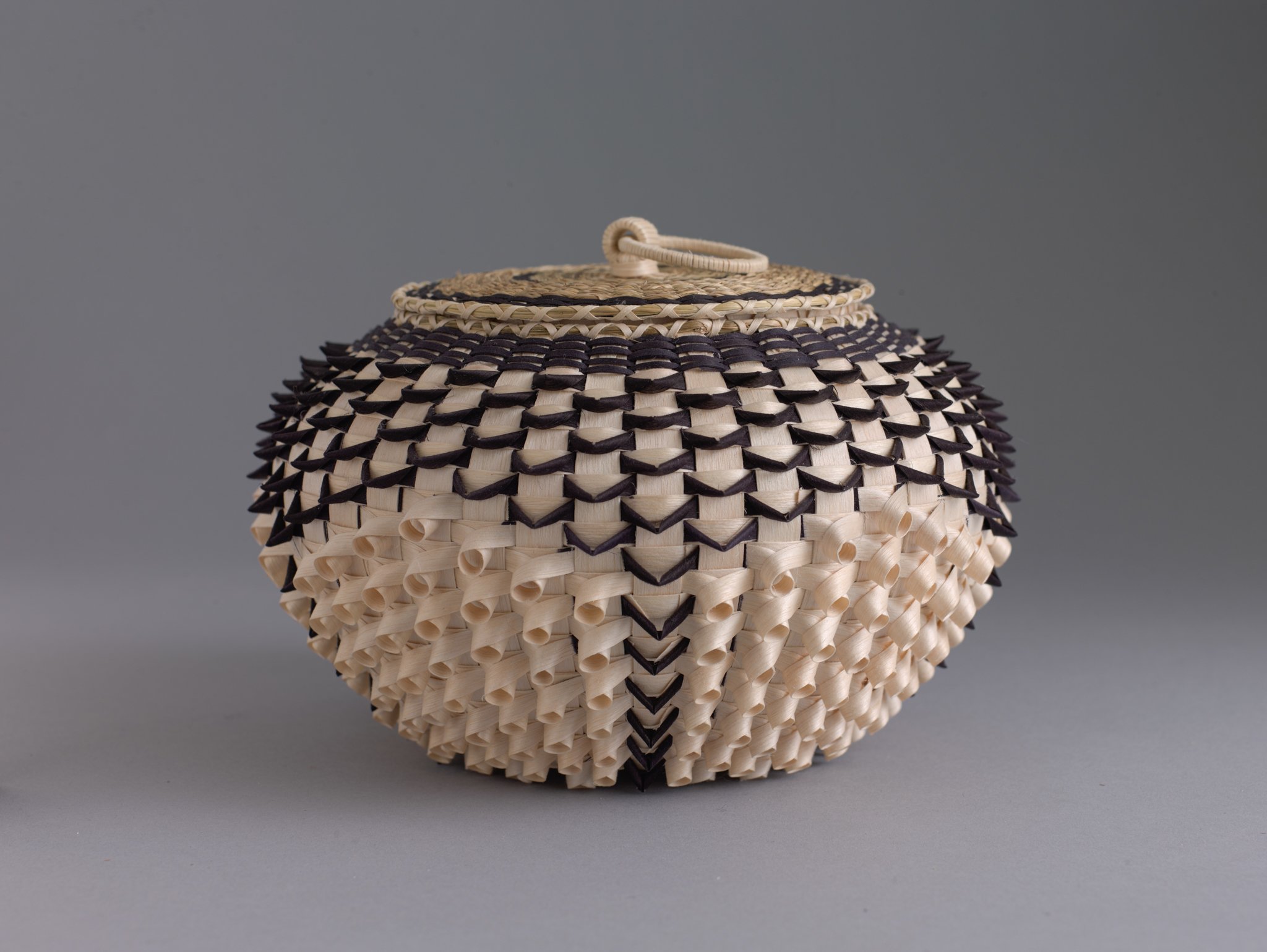
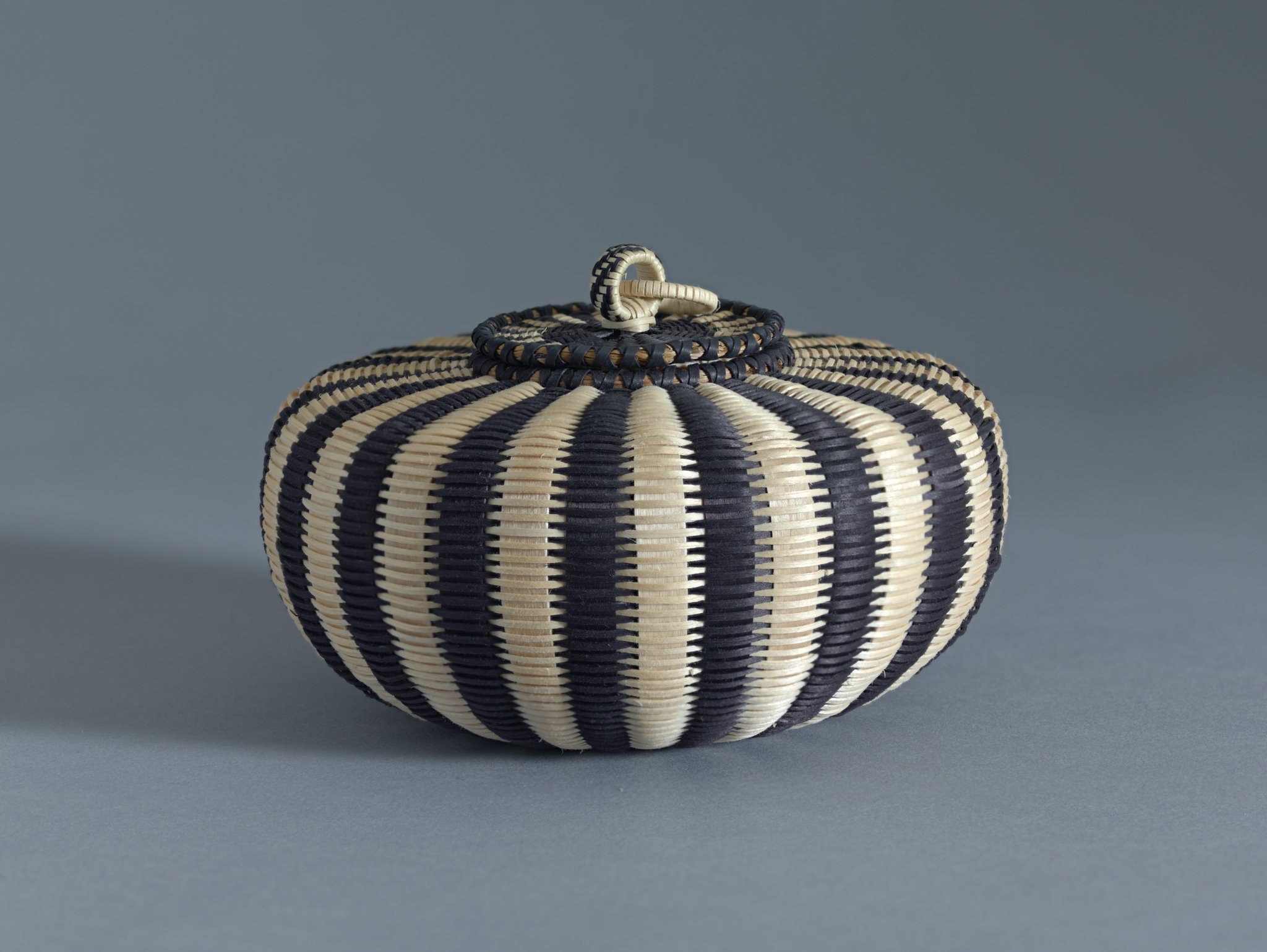
The art, history, and significance of Wabanaki basketry through Frey’s ongoing fusion of forms and designs are of global interest, from more traditional point, fine-weave, and urchin baskets to the increasingly monumental multicolored vases featuring meticulous porcupine quillwork that have become emblematic of his practice. Woven also includes new works in video, installation, and print, showcasing his weaver’s aesthetic in dialogue with new media and frameworks. Across all mediums and works in the exhibition, Frey seeks to honor ancestors, relatives, and future generations, weaving together past and present to uplift viewers through the power and beauty of his ever-evolving vision.
Jeremy Frey: Woven will be traveling to The Art Institute of Chicago, on view October 26, 2024, through February 10, 2025,
and the Bruce Museum, on view June 5 through September 7, 2025.
Programs and Events
Woven In The News
About the Artist
Courtesy the artist and Karma. Photo by Max Lee-Russell
Jeremy Frey (born 1978, Passamaquoddy Indian Township Reservation, Maine) is one of the foremost Passamaquoddy artists of his generation. Working with customary materials such as brown ash and sweetgrass, Frey introduces new materials, unique forms, and fine weaving techniques while maintaining a strong connection to the traditional roots of his practice.
Frey won Best of Show at the Santa Fe Indian Market in 2011, marking the first time a basket maker achieved this honor in the market’s ninety-year history. That same year, Frey won Best of Show at the Heard Museum Indian Guild Fair and Market in Phoenix, Arizona, which he would repeat in 2015. Frey’s work is held in the public collections of the Portland Museum of Art, Maine; Art Institute of Chicago, Illinois; Denver Art Museum, Colorado; Smithsonian American Art Museum, Washington, DC; Virginia Museum of Fine Arts, Richmond, VA; the Colby College Museum of Art, Waterville, ME, among others.
This exhibition is part of Art for All.
Art for All supports the PMA's dedication to being an open, accessible, inclusive, and welcoming museum for all, through exhibitions and programs that reflect our community and create experiences with art that strengthen our bonds and bring us together.
Major support for the exhibition has been provided by:
Generously supported by:
Isabelle and Scott Black
Adam and Diana Lee
Peter and Paula Lunder
Roger and Margot Milliken
Sara and Jim TenBroek
Carol and Joe Wishcamper
This project is supported in part by the National Endowment for the Arts.
To find out more about how National Endowment for the Arts grants impact individuals and communities, visit www.arts.gov
The Bear Bookshop, Marlboro, VT
McCandless LLC
Exhibition catalog support provided by:
Karma Gallery
Carl & Marilynn Thoma Foundation
Media Sponsor:
Banner image: Jeremy Frey (Passamaquoddy, born 1978), Cihpolakon (Eagle) (detail), 2019, ash, birchbark, sweetgrass, porcupine quill, and dye, 10 x 7 ½ x 7 ½ inches. Collection of Carole Katz, California. © Jeremy Frey. Image courtesy Eric Stoner



















